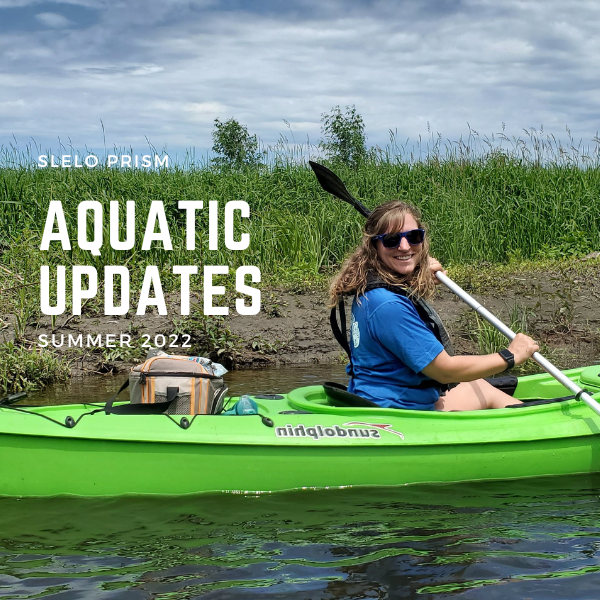This article was featured in the 2022 summer newsletter by Brittney Rogers-SLELO PRISM.
Watercraft Inspection Steward Program
Co-administered by the SLELO PRISM and the Thousand Islands Land Trust (TILT) and hosted by The Nature Conservancy this initiative is part of a larger statewide effort. WISPs are one of the NYS DEC’s Aquatic Nuisance Species priorities and funding is provided by the Environmental Protection Fund. Aquatic invasive species, such as hydrilla and rusty crayfish, are species that have been introduced into NY waterbodies and are having detrimental impacts on our waterways. Boater participation in this initiative is essential to protecting our waters from the threat of future aquatic invasive species introductions or spread.

Our 2022 stewards have conducted more than 7,200 watercraft inspections and spoken with over 16,500 people. We have intercepted aquatic invasive species on 730 occasions so far this season, preventing their spread into our waters and protecting areas visitors may travel to next. We have strategically placed the stewards around the region with the intention of reaching the largest possible audience, covering over 30 launches within our region that see either more visitors or a higher instance of hitchhikers being found on equipment.
Thank you to the launch managers for your support in our program and for allowing our stewards to be at your sites. A WISP mid-season update is available on our website, and details regarding inspections at each launch will be sent in November with the final program report.
Updates on Aquatic Restoration and Dunes Restoration Initiatives
We are currently working on Phase III at the 24-acre riparian area of South Sandy Creek and Phase II at the 4-acre project area along the North Sandy Pond barrier beach. See the 2022 summer newsletter cover article blog for more detailed information on these project areas. SLELO PRISM is appreciative of the extensive collaboration that is occurring as part of these projects ensuring the highest success possible. As part of these project efforts, an event was held during ISAW with 21 attendees. The “South Sandy Creek Experience” included a guided hike and paddle in restoration areas. As part of this effort, Native Swale and Rain Garden Seed Packets were produced which include the following species and many more that are not listed in this newsletter:
- Big Bluestem (Andropogon gerardii)
- Swamp Milkweed (Asclepias incarnata)
- Flat Topped White Aster (Aster umbellatus)
- Fox Sedge (Carex vulpinoidea)
- Canada Wildrye (Elymus canadensis)
- Spotted Joe-Pye Weed (Eutrochium maculatum)



